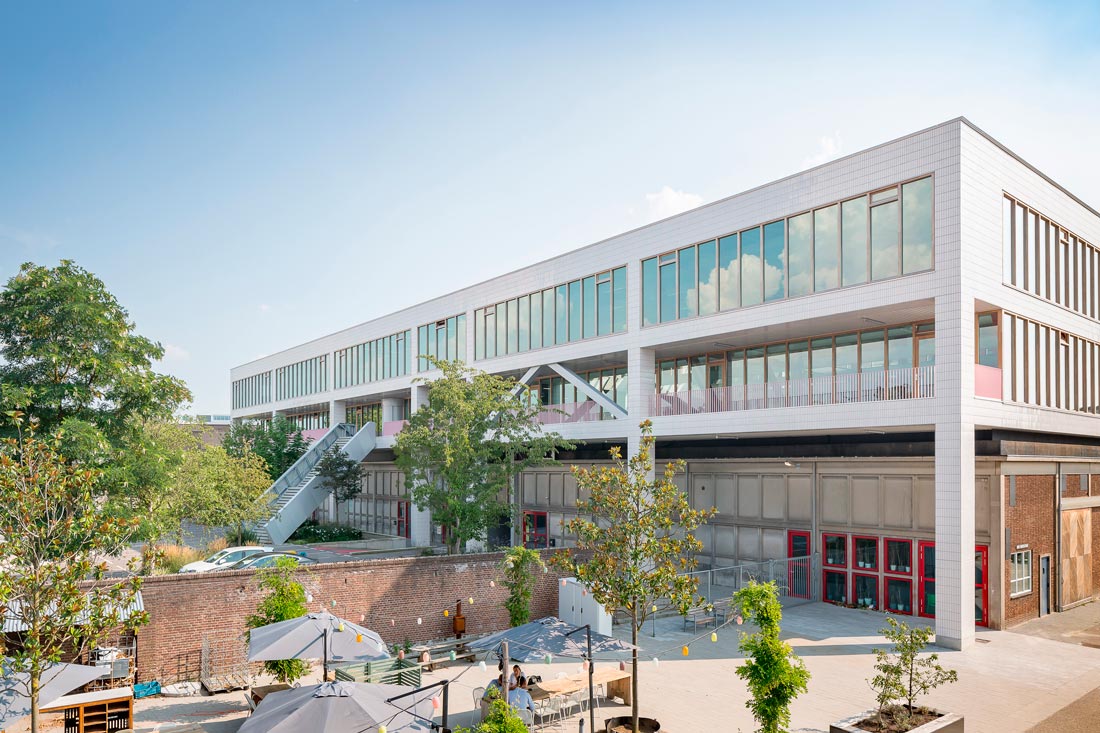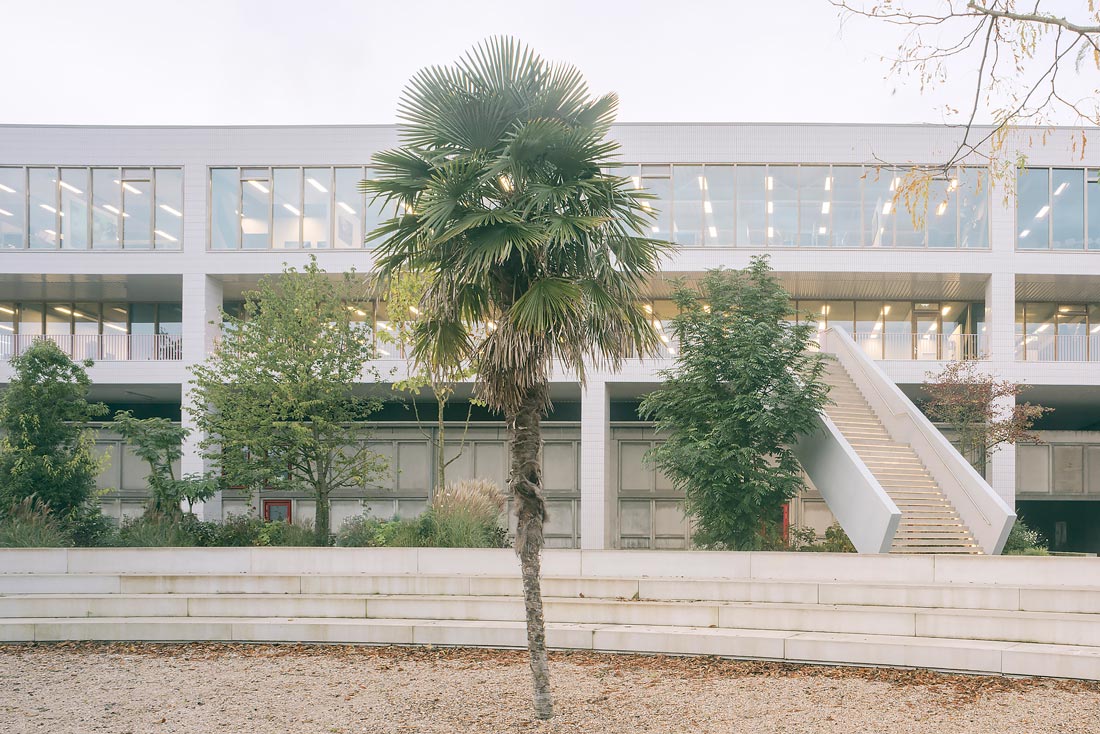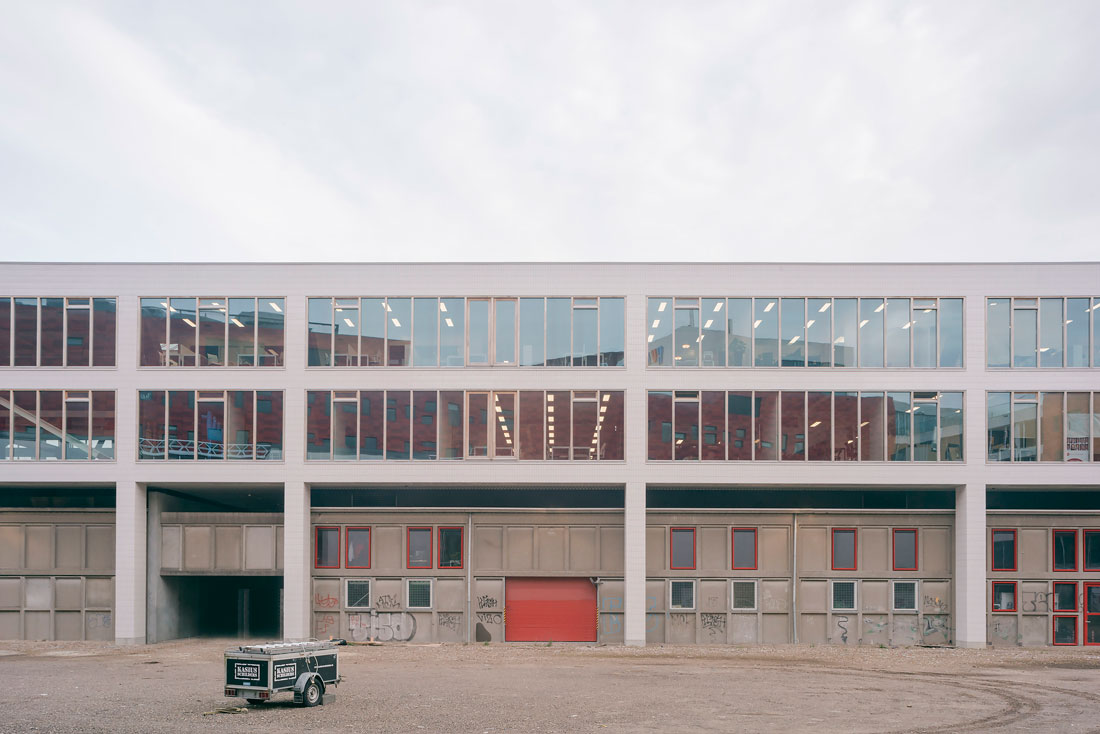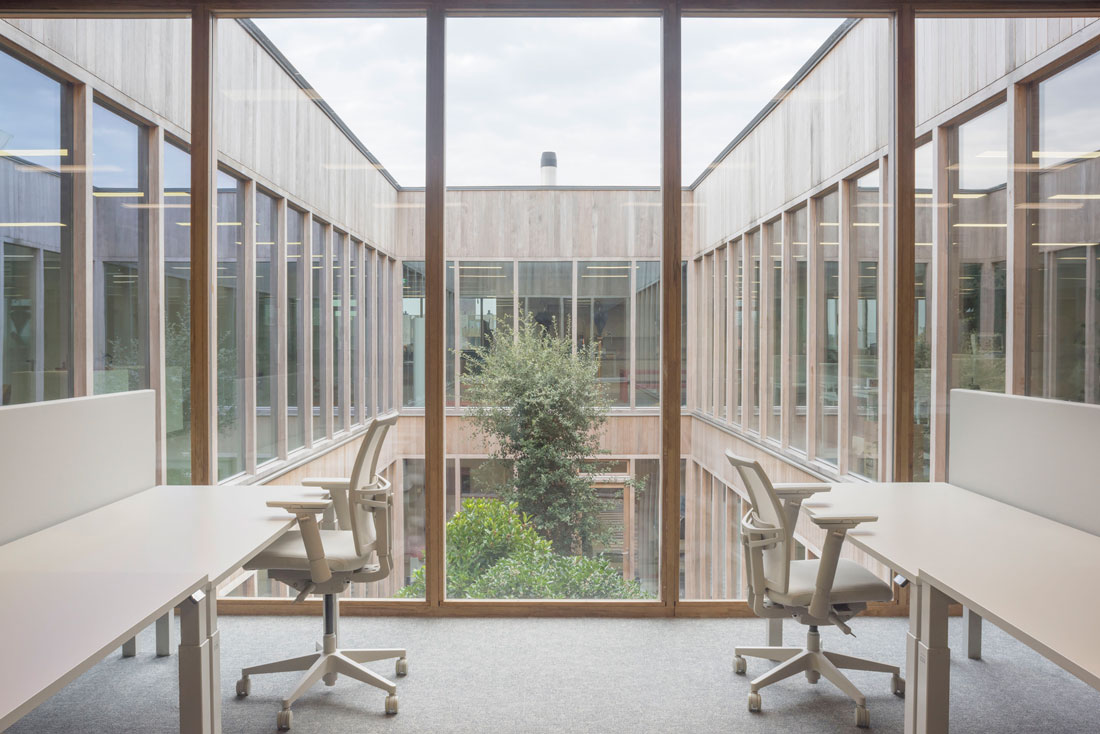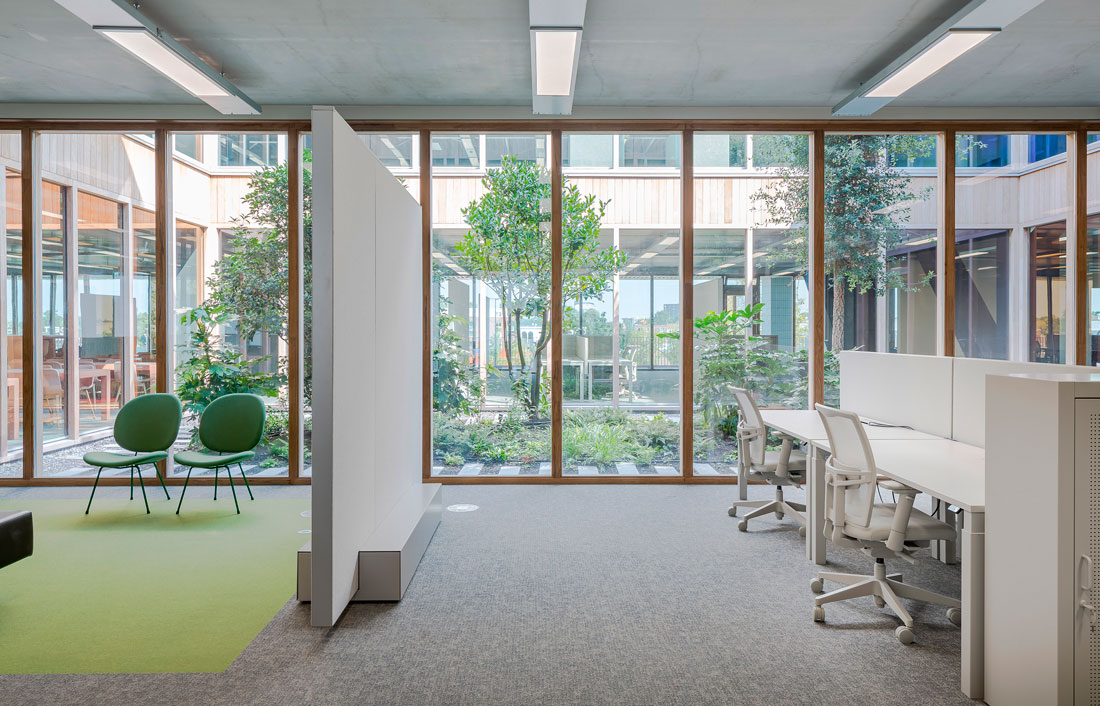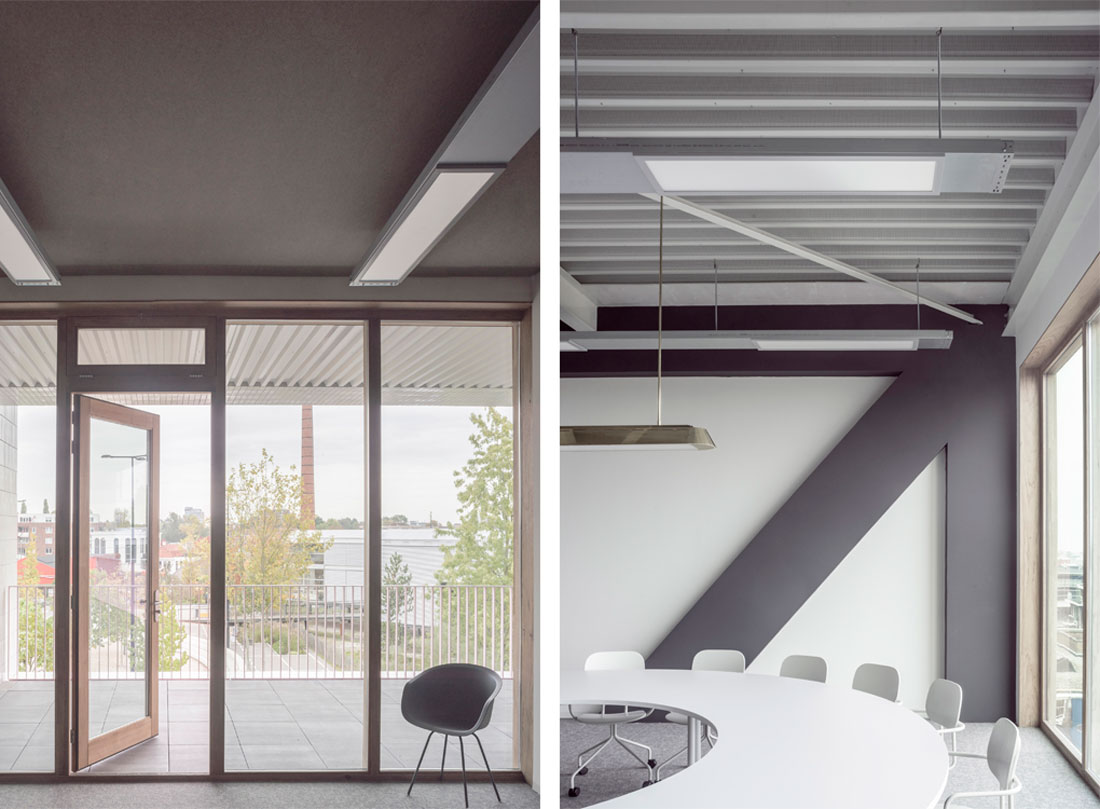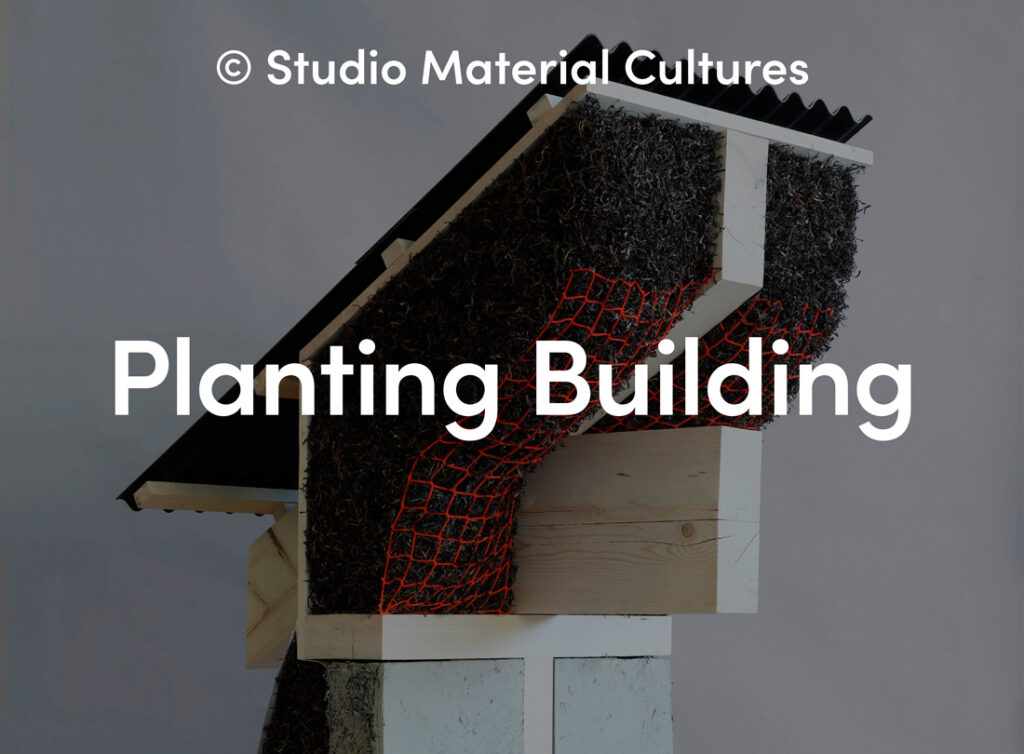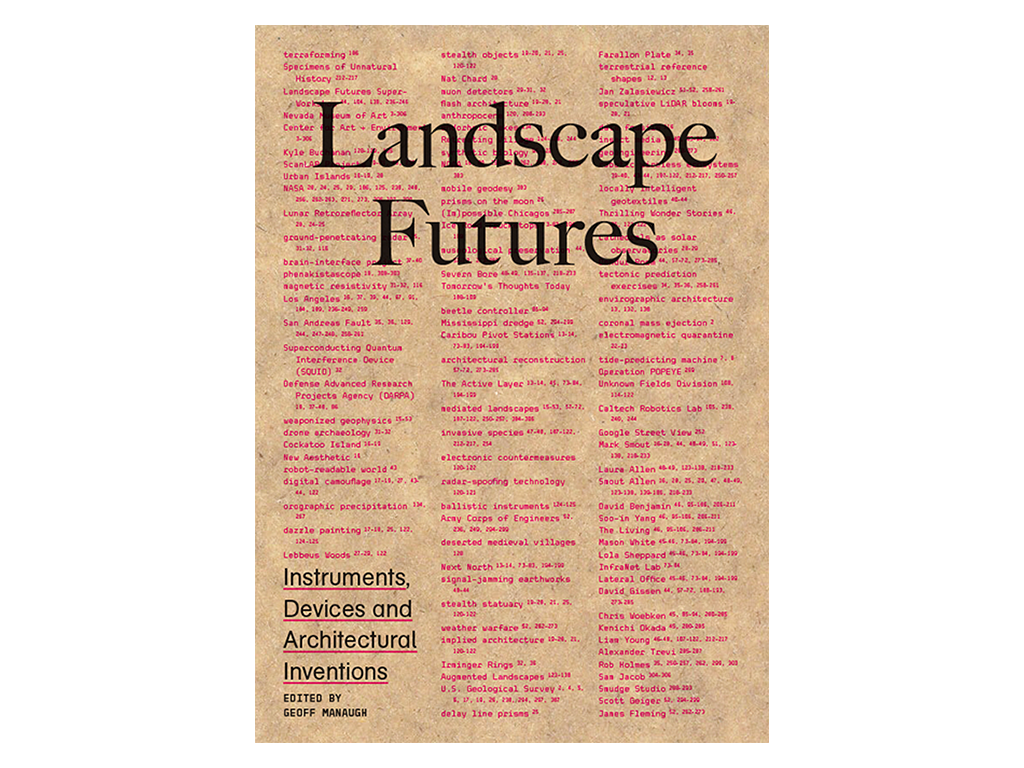In mid 2017, Schipper Bosch Development commissioned Space Encounters with the design of a new office building above the former Prodent warehouse in De Nieuwe Stad (The New City) in Amersfoort. The new building is located on the south side of the Oliemolenhof. This central space is the heart of De Nieuwe Stad. It was designed by ZUS [Zones Urbaines Sensibles, Rotterdam] as a forest, square and charging station for electric vehicles. Typologically a new public space, this renewal in form and use is characteristic of De Nieuwe Stad. With respect for the past, the future is being built in an innovative, sustainable and dauntless manner.
The new office space comprises two floors added to the existing building. The existing warehouse below is a relatively anonymous building. It has a characteristic concrete cassette façade showing the rhythm of the construction. The building used to serve as storage for the Prodent factory. Currently, it houses the online supermarket Picnic and the pop venue FLUOR. To let daylight into the building, concrete panels have been replaced with red-framed windows where necessary.
To guarantee the continuity of Fluor and Picnic during construction, the table model was chosen. The fact that the new building is constructed separately over the existing hall results in the clearest and most conceptual choice. The aim of creating a flexible, non-conventional office layout also leads to innovative choices in the field of construction methodology. Het Platform was built over the hall by means of seven steel trusses. These frames each span 34 meters and stand heart to heart more than 14 meters apart.
Constructively it is more like a bridge than a building: a typological crossover. The floors between the frames are Slimline floors, hollow floors that can handle large spans while accommodating installation-technical systems. In addition, most floor systems require under-stamping. This is not possible in this case and is not necessary with Slimline floors, because the system uses self-supporting prefab parts. By accurately coordinating the lifting moments, the companies in the underlying warehouse can continue to work during working hours.
Slimline fits within the sustainability concept embraced by De Nieuwe Stad: due to its light weight (less than 300 kg/m2) a considerable weight saving is possible over the total structure. This saves on material in the main structure and foundations. The prefab Slimline floor also ensures that wet concrete work on the building is avoided. The main structure can be assembled quickly, which results in a shorter construction time and less nuisance on the environment.
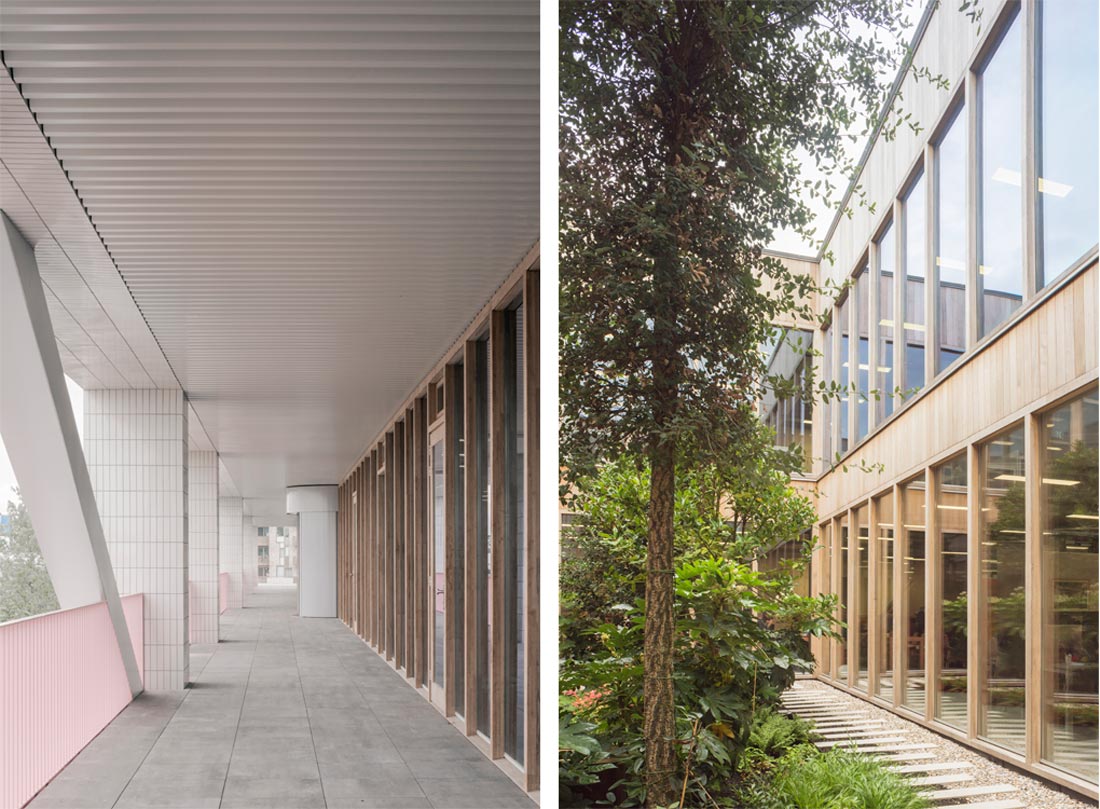 Quality and interconnection are core values for the developments in De Nieuwe Stad and thus also for Het Platform. The way in which the old warehouse and the new building just don’t touch each other and are nevertheless interconnected shows through in how the columns of the new building follow the rhythm of the old building. On the square side, Het Platform protrudes three meters from the old building. On the ground floor, this creates a covered entrance area with space for bicycle parking. On the first floor, this three-meter zone results in a generous balcony. It is the entrance balcony for the offices and an outside workplace with a view of the forest facing the building. This space is connected to the square with a three-meter-wide concrete staircase. The stairs are inviting, and the balcony has a pink strip steel balustrade.
Quality and interconnection are core values for the developments in De Nieuwe Stad and thus also for Het Platform. The way in which the old warehouse and the new building just don’t touch each other and are nevertheless interconnected shows through in how the columns of the new building follow the rhythm of the old building. On the square side, Het Platform protrudes three meters from the old building. On the ground floor, this creates a covered entrance area with space for bicycle parking. On the first floor, this three-meter zone results in a generous balcony. It is the entrance balcony for the offices and an outside workplace with a view of the forest facing the building. This space is connected to the square with a three-meter-wide concrete staircase. The stairs are inviting, and the balcony has a pink strip steel balustrade.
The grand industrial gesture of the building becomes friendly and soft here. The office connects with the square through the balcony and the stairs. Inside and outside. The size of the balcony can be felt again at its ends. Closing the depth of the balcony here on the second floor creates an imaginary vertical line that continues into the old building. It goes without saying that Het Platform is above the former warehouse. Old and new have been integrated by continuing the architectural characteristics of the existing construction in the new building. The connection between old and new is also reflected in the finish, on the outside of Het Platform. The white glazed ceramic tiles are traditionally used in industrial interiors because of their resilience. By placing them on the façade, the enormous scale of the building becomes tactile and connects with the history of the place. At the same time, it is a reference to the super structures by Superstudio – the avant-garde architects’ collective that was the perfect example of counterculture in the service of freedom in the 1960s and 1970s.
The Platowood Fraké frames are another striking detail in the façade. Fraké is a fast-growing hardwood species from responsibly managed forests in West Africa. The frames can be applied untreated, so they are unpainted. By boiling the wood, as it were, (platonizing or hydro-thermal modification), the wood is protected against external influences in a sustainable way. De Nieuwe Stad and therefore Het Platform are also energy- and raw material-neutral. There are solar panels on the roof, and the building is connected to a local heat network. The heat is produced in a biomass boiler that is placed in the warehouse. This installation will provide heat for the entire area. Connection to the natural gas network is therefore no longer necessary.
The interior is completely at the service of the building – the same no-nonsense service. Functional necessities have been clustered to keep the size of the large office floors tangible. Color clusters with pieces of furniture to be used for conversation or relaxation fill the space in a natural and fresh way.
The building connects the past, the present and the future – in form, in materiality, in meaning, in use, in energy. The trees on the square give the building context, both on the ground and in the sky. This quality is continued in the courtyard, which fits in with the scale of the building: the green of the trees, the yellow crosses on the square, the red frames in the shed, the pink fencing and the blue sky. The white tiling elevations work like a canvas that connects everything.
